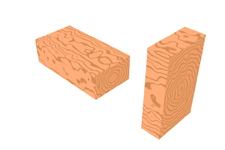
 Once you’re happy with that, mark where the reveal on the jamb head meets the leg. Check how the leg meets the floor-if the floor is out of level, you may need to trim the bottom of the leg to meet it fairly. Once you’ve marked the reveal, hold a casing leg in place, with its edge on your pencil marks. This is called a reveal, and carpenters mark it all around the jamb with a sharp pencil and combination square. Steps for Installing Door TrimĬasing should sit back from the face of the jamb by 1/8 inch to ¼ inch. When the jamb is recessed by more than ¼ inch, the solution is to rip extensions to nail to the edge of the jamb to come flush with the wall. If that’s not the case, use a power planer or table saw to rabbet the back of the casing where it will hit the wall. If the wall surface is drywall and not plaster or skim-coated drywall and the difference is 1/8 inch or less, you can just beat the drywall down with a hammer-crude, but effective. If this is the case, the approach will differ. After nailing, carefully cut the shims with a sharp knife even with the casing, then caulk the joint with the painter’s caulk. These shims will keep the nails from pulling the casing back at an angle. Instead, when you nail the trim in place, nail it first to the jamb, then insert tapered shims into the gap between the wall and the back of the casing at the points where you’ll nail. If the trim is to be painted you can leave the jamb alone. This is the best option if the trim is to receive a natural finish and won’t be caulked to the wall. If the jamb projects slightly from the wall you can plane it flush.
Once you’re happy with that, mark where the reveal on the jamb head meets the leg. Check how the leg meets the floor-if the floor is out of level, you may need to trim the bottom of the leg to meet it fairly. Once you’ve marked the reveal, hold a casing leg in place, with its edge on your pencil marks. This is called a reveal, and carpenters mark it all around the jamb with a sharp pencil and combination square. Steps for Installing Door TrimĬasing should sit back from the face of the jamb by 1/8 inch to ¼ inch. When the jamb is recessed by more than ¼ inch, the solution is to rip extensions to nail to the edge of the jamb to come flush with the wall. If that’s not the case, use a power planer or table saw to rabbet the back of the casing where it will hit the wall. If the wall surface is drywall and not plaster or skim-coated drywall and the difference is 1/8 inch or less, you can just beat the drywall down with a hammer-crude, but effective. If this is the case, the approach will differ. After nailing, carefully cut the shims with a sharp knife even with the casing, then caulk the joint with the painter’s caulk. These shims will keep the nails from pulling the casing back at an angle. Instead, when you nail the trim in place, nail it first to the jamb, then insert tapered shims into the gap between the wall and the back of the casing at the points where you’ll nail. If the trim is to be painted you can leave the jamb alone. This is the best option if the trim is to receive a natural finish and won’t be caulked to the wall. If the jamb projects slightly from the wall you can plane it flush. 
This is most important at the top of the door where the joints are.Ĭheck this by holding a straightedge on the face of the wall and extending it to the jamb-it should just kiss the edge. Prepping the Door for Trimįor the casing to sit flat and for the head joint to meet well, the jamb and the face of the wall need to be in plane with each other. The casing can be molded or flat, and whether the casing legs and head meet at the top of the door in miter joints or butt joints depends partly on which you choose. A butt joint is where the square-cut ends of the legs meet the edge of the head at 90 degrees.

A miter joint is where the ends of two pieces of molding are cut at equal angles-45 degrees for a square corner.Either way, to trim a door, you need to bridge the gap between the door jamb (the frame from on which the door is hinged and where the latch engages) and the wall. Either you’ve installed a new door or decided to change the door’s trim for aesthetic reasons.







 0 kommentar(er)
0 kommentar(er)
